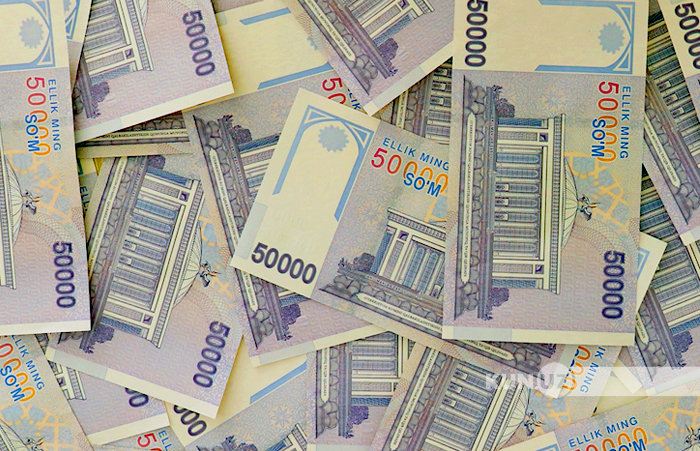Liquidity of banks decreased by 700 billion soums in Q1 2019 – Central Bank

In the first quarter of 2019, total liquidity in the banking system fell from 5.4 trillion soums to 4.7 trillion soums, or by 13%, the Central Bank states in its review.
The average monthly balance on correspondent accounts of commercial banks with the Central Bank amounted to 3.8 trillion soums, which is 2.4 trillion soums less than in 2018.
The net effect of changes in the balance of funds in government accounts on liquidity was of a reducing nature, decreasing its level by 605 billion soums. In particular, the issue of government securities led to the withdrawal from the banking system 186 billion soums.
The operations of the Central Bank to regulate liquidity (lending to commercial banks and holding deposit auctions) were generally factors that lower liquidity. At the same time, if the repayment of the Central Bank loans by commercial banks reduced the liquidity of the banking system by 454 billion soums, the return of commercial bank deposits by the Central Bank increased liquidity by 227 billion soums.
In addition, foreign exchange interventions by the Central Bank absorbed the liquidity that arose when buying gold. Thus, it ensured the neutrality of gold and foreign exchange operations.
Contribution of changes in the volume of required reserves of commercial banks in the Central Bank to liquidity reduction amounted to 73 billion soums, while reduction in cash in circulation affected the increase in liquidity by 323 billion soums.
One of the main objectives of liquidity regulation is the approximation of the interbank market interest rates to the refinancing rate, the document says. As part of the transition to inflation targeting, the Central Bank pays special attention to this operational goal.
Earlier, it was reported that the Central Bank would introduce new requirements for banks' liquidity ratios and move to risk-oriented supervision.
Related News

14:13 / 14.01.2026
Central Bank moves to tighten oversight of BNPL services

12:06 / 14.01.2026
Uzbekistan begins studying models for a national digital currency

15:02 / 10.01.2026
Tashkent residents report highest inflation as nationwide perception hits 12 percent

14:24 / 09.01.2026



